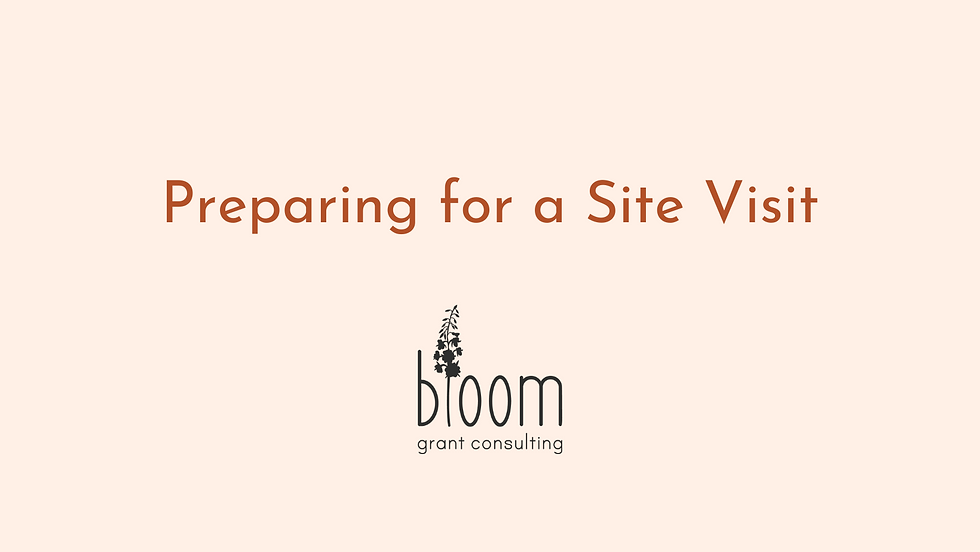- Jacquee Kurdas
- Nov 3, 2023
- 2 min read
Updated: Nov 11, 2024

Securing a grant is just the beginning of a nonprofit's journey. To maintain a successful partnership with funders, ensuring compliance with grant requirements is paramount. At Bloom Grant Consulting, we understand the importance of navigating grant regulations effectively. In this blog post, we'll provide you with a comprehensive guide on how to ensure compliance with grant requirements and build strong relationships with your funders.
Thoroughly Understand Grant Terms and Conditions
Before embarking on any project funded by a grant, thoroughly review the grant agreement and terms provided by the funder. Understand the scope of work, budget allocations, reporting deadlines, and any specific benchmarks or outcomes expected.
Designate a Responsible Point Person
Assign a dedicated individual or team responsible for overseeing grant compliance. This person should have a comprehensive understanding of the grant requirements and be equipped to coordinate all activities related to compliance.
Create an Internal Compliance Plan
Develop an internal compliance plan that outlines the steps, deadlines, and responsibilities associated with fulfilling grant requirements. This plan should cover everything from reporting schedules to expense tracking and progress updates.
Adhere to Reporting Guidelines
Timely and accurate reporting is a cornerstone of grant compliance. Prepare detailed progress reports, financial statements, and any other documentation required by the funder. Ensure these reports align with the guidelines provided and showcase your organization's impact effectively.
Maintain Open Communication with Funders
Regular communication with funders is key to compliance. If challenges arise, communicate early and openly with funders, discussing any potential adjustments to the project scope, timeline, or budget.
Budget Tracking and Management
Monitor project expenses closely to ensure they align with the approved budget. Create a system that tracks all expenditures related to the grant, providing clear documentation for every dollar spent.
Document Changes and Decisions
Keep a comprehensive record of any changes made to the project, whether they're adjustments to the timeline, scope, or budget. This documentation demonstrates transparency and accountability.
Ensure Alignment with Funder's Mission
Maintain alignment between your project activities and the funder's mission and goals. Make sure that every aspect of your project reflects the values and objectives of the funder.
Comply with Legal and Ethical Standards
Ensure that all project activities adhere to legal and ethical standards. This includes adhering to relevant laws, regulations, and industry best practices.
Internal and External Audits
Conduct regular internal audits to verify compliance with grant requirements. Additionally, be prepared for any external audits that the funder may initiate.
Ensuring compliance with grant requirements is not only a responsibility but an opportunity to demonstrate your organization's commitment to transparency, accountability, and impactful project management. By understanding grant terms, designating a responsible point person, creating a robust compliance plan, and maintaining open communication, you can build a strong relationship with your funders and maximize the impact of your projects. At Bloom Grant Consulting, we're here to support you in navigating the complexities of grant compliance, allowing you to focus on creating lasting change in your community.


